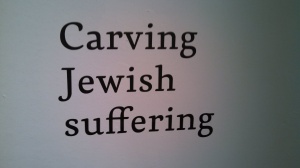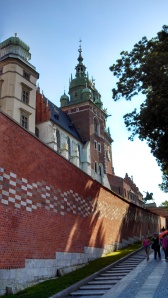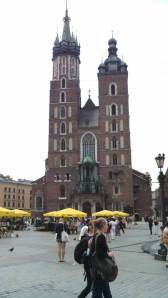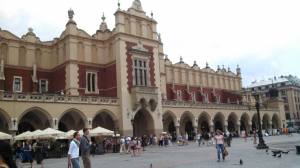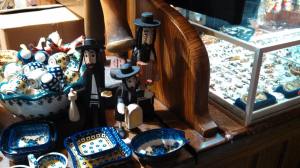I’ve been sending my blog to Professor Elliot Lefkovitz, the professor I had last fall for a Holocaust and 20th Century Genocide class at Loyola. After I sent him my last post about the Jew figurine phenomenon here in Poland, he sent me this response via email. I thought I would share it with you, as it adds another perspective to the overall discussion and I thought at least some of you would find it interested.
We were in Poland in 2000. We stayed in Cracow, and I went to Auschwitz on a tour, but although I have some powerful and arresting memories, there were many people and a bit too much commercialization for the experience to sink in. I then rented a car and driver and went to Majdanek, near Lublin (My wife does not visit concentration camps). The experience at Majdanek was overwhelming in every way especially since it was late afternoon and I was the only one there. Surrounded by ashes of the victims, the crematorium and gas chamber, the barracks, especially the barracks filled with shoes and the barbed wire, it was not difficult to imagine the suffering and cries of those imprisoned there.
I just interviewed a survivor of the Warsaw ghetto who was sent to Majdanek. Many of those in the railway car in which she rode there were dead by the time they arrived due to suffocation. The survivor was immediately sent to hard labor, but for some infraction she received 25 lashes from an SS woman. Somehow she survived. A few weeks later someone was missing from the appel. All the prisoners had to kneel until the missing prisoner was found. She had fallen asleep from exhaustion. The prisoners were forced to watch her hanging. But while the noose was around her neck and before the stool was kicked out, the SS hangman asked if she had a last wish. She said,” I don’t want anything from you.” He asked again. She said, “A glass of water.” Satisfied that he had gotten her to ask for something thereby demonstrating his power, he quickly kicked the stool out from under her. The survivor I interviewed was transported from Majdanek to Auschwitz in July 1943. She remained there until January 1945. Her suffering in Majdanek pales to what she went through in Auschwitz.
I bought not a figurine but a carved wooden Jewish figure which fits into Category Four-Jewish suffering. It depicts as Orthodox Jewish man embracing two children who stand facing him. He hands are on their heads trying to shield them. It might be possible to interpret the shielding as blessing but not from the look on his face. The figures are completely clothed in black.
It was fascinating to learn about the other types of figures.
If any of you have an opinion you would like to add about any of the topics I raise in these posts, please leave a comment at the end of the post. I know I am interested in what you all have to say, and I am sure others are as well.
